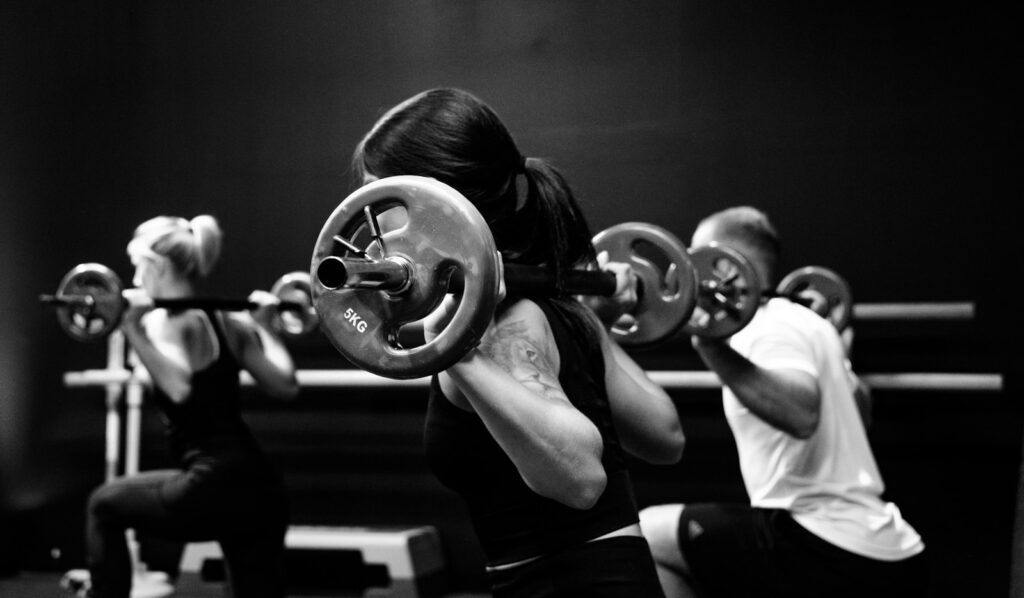In the evolving landscape of fitness trends, rucking has emerged as a popular full-body workout that combines the benefits of cardio, strength training, and endurance. This workout involves walking or hiking with a weighted backpack, known as a ruck and offers a myriad of health benefits. Whether you’re a fitness enthusiast or a beginner looking to improve your fitness, rucking is a versatile and effective way to achieve your goals.
What is Rucking?
Rucking, derived from the military practice of marching with heavy gear, has been adapted for civilian fitness enthusiasts. The essence of rucking is simple: load a backpack with weight and start walking. The weights can vary depending on your fitness level, typically ranging from 10 to 50 pounds. The activity can be performed anywhere, from urban environments to nature trails, making it accessible to everyone.
Benefits of Rucking
- Full-Body Workout: Rucking engages multiple muscle groups, including the legs, back, shoulders, and core. The added weight increases the intensity of the workout, helping to build strength and endurance simultaneously.
- Cardiovascular Health: Walking with added weight elevates the heart rate, providing an effective cardiovascular workout. It improves heart health, increases stamina, and aids in weight management.
- Calorie Burn: The combination of walking and carrying weight results in a higher calorie burn compared to regular walking. This makes rucking an efficient exercise for those looking to lose weight or maintain a healthy weight.
- Low Impact: Unlike running or high-intensity interval training, rucking is low impact and gentler on the joints. This makes it an excellent option for people with joint issues or those recovering from injuries.
- Mental Health Benefits: Engaging in outdoor activities like rucking can improve mental well-being. The combination of physical exercise and being in nature reduces stress, enhances mood, and boosts overall mental health.
Getting Started with Rucking
Equipment Needed: To start rucking, all you need is a sturdy backpack and some weights. You can use weight plates, sandbags, or even household items like water bottles or books. Additionally, wearing supportive footwear is crucial to prevent injuries and ensure comfort during your ruck.
Finding the Right Weight: Beginners should start with a lighter load, around 10-20% of their body weight. As they become more accustomed to rucking, they can gradually increase the weight to challenge their muscles and enhance the workout.
Choosing Your Route: One of the great things about rucking is its versatility. You can ruck anywhere – in your neighbourhood, local parks, or hiking trails. Varying your routes can keep the activity interesting and provide different challenges, such as inclines or uneven terrain.
Proper Form and Technique: Maintaining proper form is essential to avoid injury. Keep your back straight, shoulders back, and engage your core. Take steady, measured steps, and avoid leaning forward too much under the weight of the ruck.
Advanced Rucking Techniques
For those looking to take their rucking workouts to the next level, consider incorporating these advanced techniques:

Interval Rucking: Alternate between periods of fast-paced rucking and slower, recovery-paced rucking. This can increase cardiovascular endurance and calorie burn.
Incline Rucking: Seek out hills or stairs to add an extra challenge to your rucking routine. The added elevation changes engage different muscle groups and increase the intensity of the workout.
Ruck Marches: Participate in organized ruck marches, which are group events where participants ruck over a set distance. These events can add a social element to your workout and provide a sense of accomplishment.
Rucking Community and Events
Rucking has a strong community aspect, with numerous clubs and events dedicated to this fitness trend. Organizations like GORUCK host rucking events and challenges that bring people together to ruck for a cause or simply enjoy the camaraderie of a group workout. Participating in these events can be motivating and provide a sense of belonging.
Rucking for Different Fitness Goals
Weight Loss: Rucking is an excellent exercise for weight loss due to its high-calorie burn. Combining rucking with a balanced diet can accelerate fat loss and improve overall fitness.
Strength Building: Increasing the weight in your ruck can turn it into a strength-building exercise. The added resistance helps build muscle, particularly in the legs, back, and shoulders.
Endurance Training: For those training for endurance events like marathons or obstacle races, rucking can be a valuable addition to your regimen. It builds stamina and mental toughness, which are crucial for endurance sports.
Safety Tips for Rucking
While rucking is generally safe, it’s important to follow these tips to prevent injuries:
- Start Slowly: If you’re new to rucking, start with lighter weights and shorter distances. Gradually increase the weight and distance as your fitness improves.
- Stay Hydrated: Carry enough water, especially on longer rucks. Dehydration can lead to fatigue and muscle cramps.
- Listen to Your Body: Pay attention to any signs of discomfort or pain. If you experience persistent pain, take a break and consult a healthcare professional if necessary.
- Warm Up and Cool Down: To prevent muscle stiffness and injury, incorporate a warm-up before you start rucking and a cool-down afterward.
Rucking in Different Environments
Urban Rucking: Walking through city streets with a weighted backpack can be a convenient way to incorporate rucking into your daily routine. You can ruck to work, run errands, or explore new parts of the city.
Nature Rucking: Hiking trails provide an excellent environment for rucking. The uneven terrain and natural obstacles add an extra challenge, while the scenic surroundings can make the workout more enjoyable.
Beach Rucking: Rucking on sand is a great way to increase the difficulty of your workout. The soft surface requires more effort to walk on, engaging additional muscles and burning more calories.
Rucking Workouts and Programs
There are various rucking workout programs available to suit different fitness levels and goals—websites like Ruck. Training offers structured rucking plans and resources to help you get started and progress. These programs often include a mix of rucking distances, weights, and techniques to keep the workouts effective and engaging.
The Future of Rucking
As the popularity of rucking continues to grow, we can expect to see more innovations and advancements in this fitness trend. Improved gear, such as ergonomically designed rucksacks and specialized weights, can enhance the rucking experience. Additionally, digital tools like fitness apps and wearable technology can help track progress and provide personalized training plans.
Conclusion
Rucking is more than just a workout; it’s a comprehensive fitness activity that offers numerous benefits for the body and mind. By incorporating rucking into your fitness routine, you can enjoy a full-body workout that improves strength, endurance, and cardiovascular health. Whether you’re a beginner or an experienced fitness enthusiast, rucking is a versatile and effective way to achieve your fitness goals. Join the rucking revolution and experience the transformative power of this simple yet powerful workout.





















